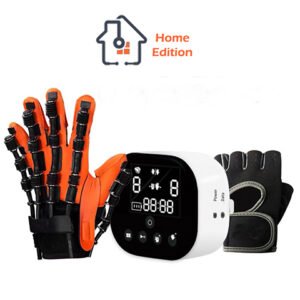Stroke Patients Home Therapy
Stroke rehabilitation is an important part of recovery after a stroke. The severity of its complications and each person’s ability to recover vary widely. In fact , Stroke often causes paralysis on one side of the body, which means patients lose function in one arm and one leg. However, this loss isn’t necessarily permanent. for this reason, rehabilitation is especially crucial during the early stages of recovery, when patients have little to no control over their affected muscles. The goal of stroke rehabilitation here is to help you relearn skills you lost when a stroke affected part of your brain and regain maximal functional mobility
In general, factors that improve recovery after a stroke include early intervention, repetition, and motivation. Patients who are more active and persistent in their rehabilitation, are better able to regain more function
Current resources are costly and are primarily provided by healthcare professionals inside a hospital or medical facility. Along with occupational therapy, the devices that are used to treat patients are mostly large tabletop machines or are unpowered only providing the offer of physical resistance for the patient to work with.
Physical therapy occurs largely in a hospital or clinical settings but can migrate toward home therapy thanks to the cutting-edge technology of the Robotic Rehabilitation Gloves: SIFREHAB-1.1
The robotic rehabilitation gloves mobilizes finger joints and works both in flexion and extension. Even on the patient who has no active residual movement, it is possible to apply passive mobilization from the first stages of treatment. The software offers many possibilities for the customization of the therapy.
All the movements of the Robotic Rehabilitation Gloves: SIFREHAB-1.1 including flexion, extension, plus the pinch can be programmed for each patient. The compensation level is calibrated according to the weight of the arm and the residual control and movement abilities of the patient. These supports are particularly useful during functional training because otherwise it often would not be possible without adequate weight relief for the upper limb.
Home therapy incorporates the recovery of daily-living-activity functions as well as incorporating environmental adjustment at home and can help improve efficacy. The ability to perform rehabilitation at home is beneficial for functional and psychological performance, and for independence.



